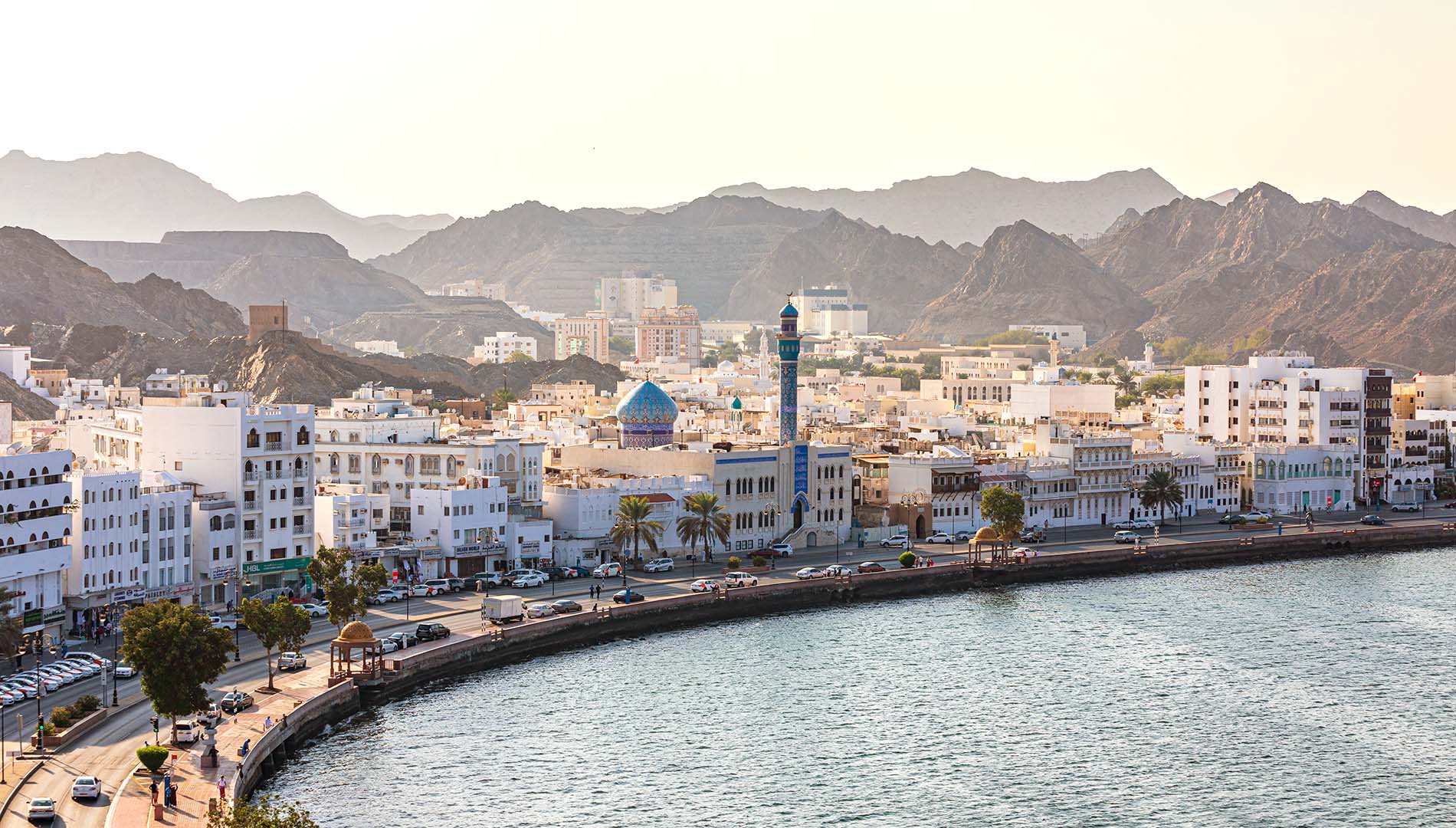If you haven’t visited the Arabian Peninsula before, you would be forgiven for thinking all cities are like Dubai — towering glass skyscrapers surrounded by swaths of desert. Muscat, however, is the antithesis of this. The whole city offers a magical concoction of sparkling cultural sights and mystical fortifications taken straight out of “One Thousand and One Nights.”
- ThursdayIconic Sights of Muscat
- FridayCultural Heritage
- SaturdayNatural Wonders
Muscat is also, conveniently, quite compact. So three days in and around the historic Omani capital is just about long enough to marvel at 16th-century forts, ancient markets, and natural wonders. And since Oman’s weekend is Friday and Saturday, Thursday through Saturday is perfect for a long weekend getaway.
As always, check for travel guidelines and closures before planning your trip.
Thursday: Iconic Sights of Muscat
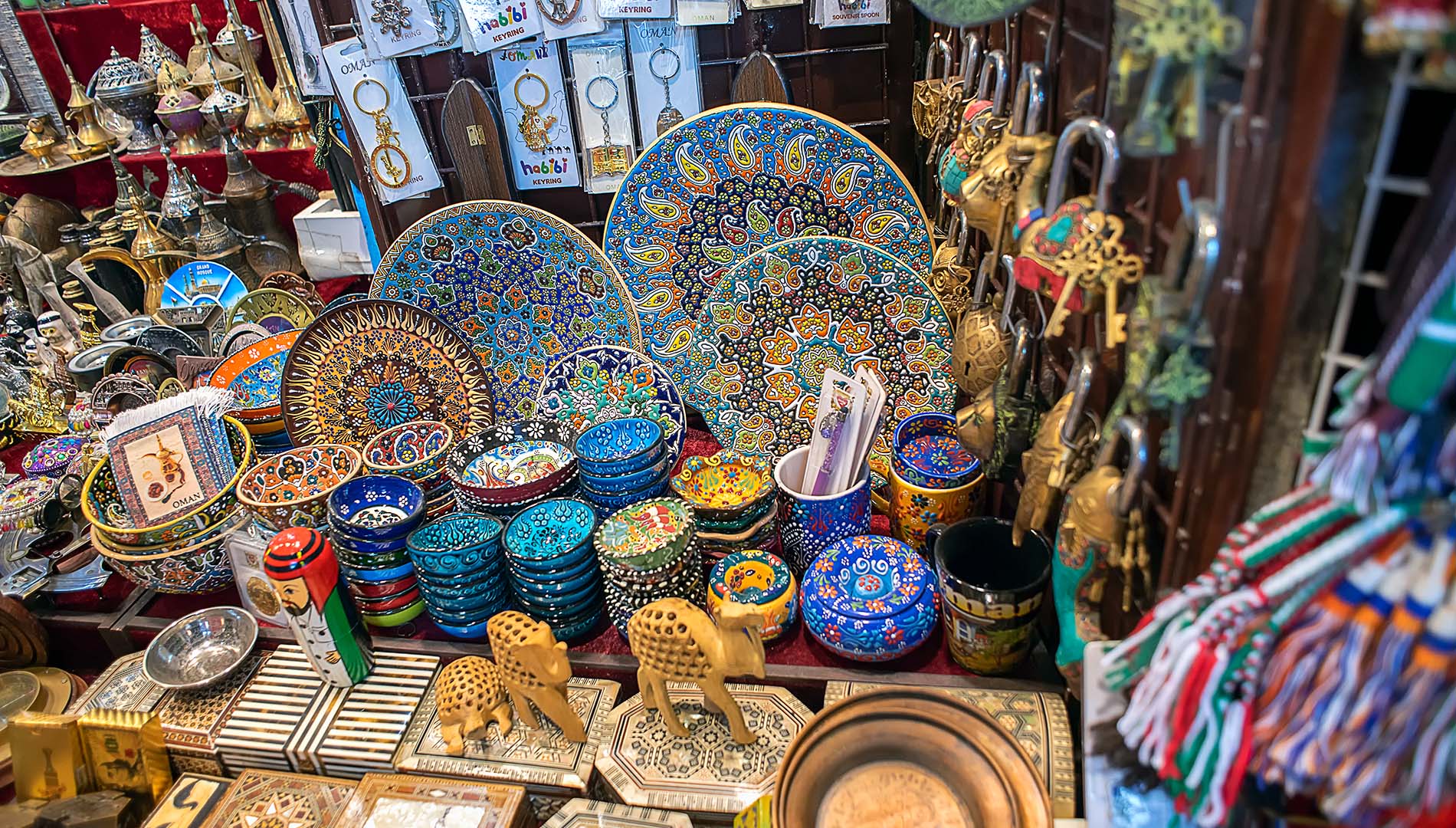
To start your long weekend in Oman’s capital, head down early to the corniche and prepare to get lost in the winding alleyways of 200-year-old Mutrah Souq, which is a short drive from Al Bustan Palace, a Ritz-Carlton Hotel.
Watch the traditional fishing boats landing every size and color of fish for the market. Then head through the two-story domed gateway into the souk. Let the smells of fresh bread and sweet date syrup lure you deeper into the narrow alleyways as you seek out a morning snack. Expect hawkers to shout out, waft fragrant perfumes in your direction, or wave gold necklaces at you. If anything catches your fancy, haggle to get the best price.
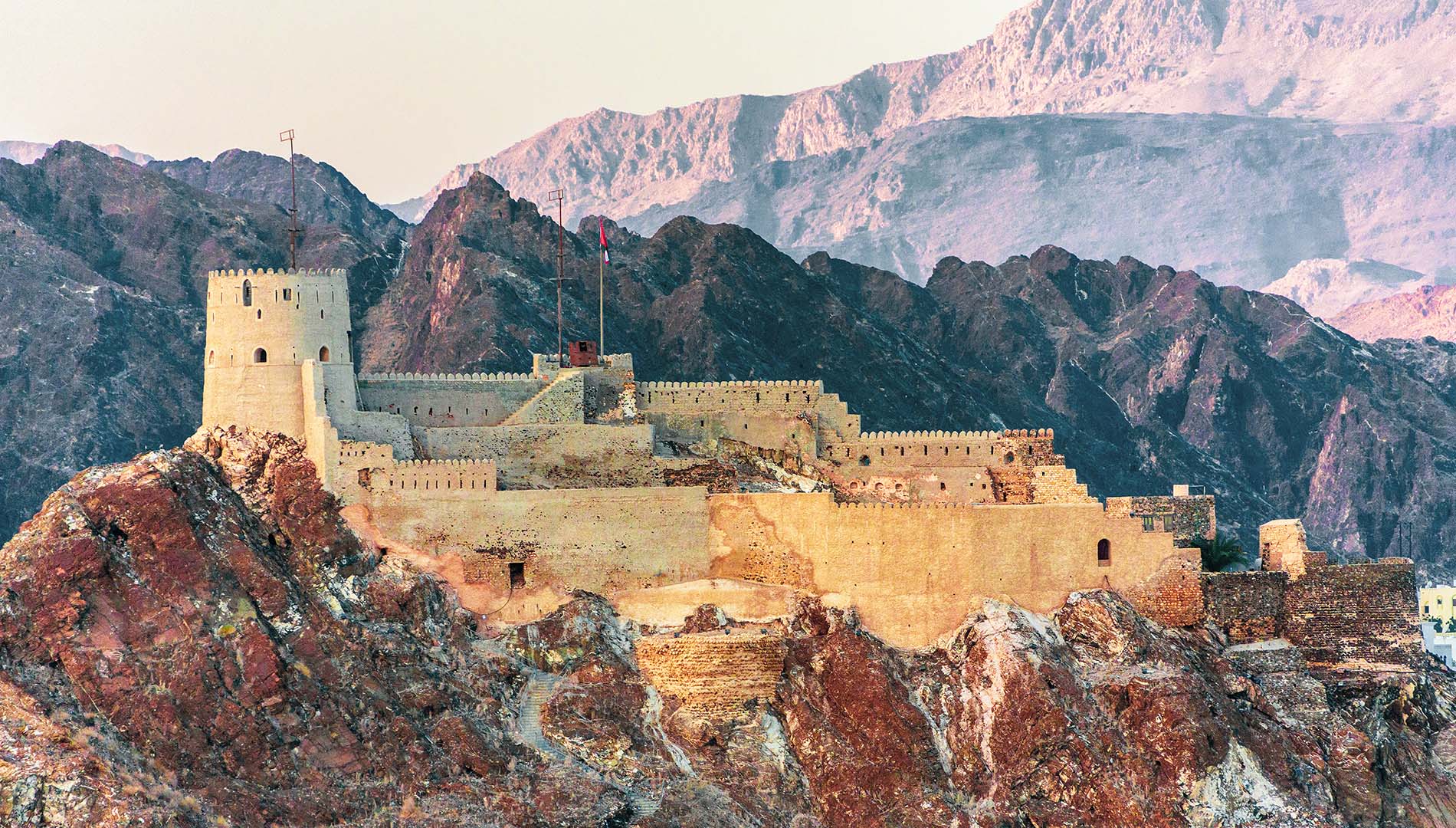
To the left of the souk (with the water at your back) is the towering, sandy-colored Mutrah Fort, a lookout built by Portuguese traders in the late 16th century. Walk up the steps, past iron canons, and look far out to sea. You may even hear the mesmerizing melody of a piper playing the bagpipes (yes, Oman has traditional bagpipes).
Walk farther along the corniche, following the sharp angles of a cliff on your right, to the National Museum, housing artifacts, jewelry, and documents from throughout Omani history. Opposite the museum is the blue-roofed Al Alam palace, the official home of the sultan in Muscat. Look through the gates at the intricate mosaics lining the palace walls.
If you’re feeling hungry after a busy day, take a cab to Rozna Restaurant for some local food. Sample shuwa (mutton cooked in spices) or biryani (spiced rice and meat) washed down with a super-sweet sharbat drink.
Friday: Cultural Heritage
Start your day at Dukanah Cafe, a homey local restaurant filled with antiques and heavy wooden tables. A must-try is falafel with foul (fava beans in a spiced sauce) and hummus served with pita bread and strong coffee. Ask for takeout, as there won’t be many places to stop after leaving Muscat.
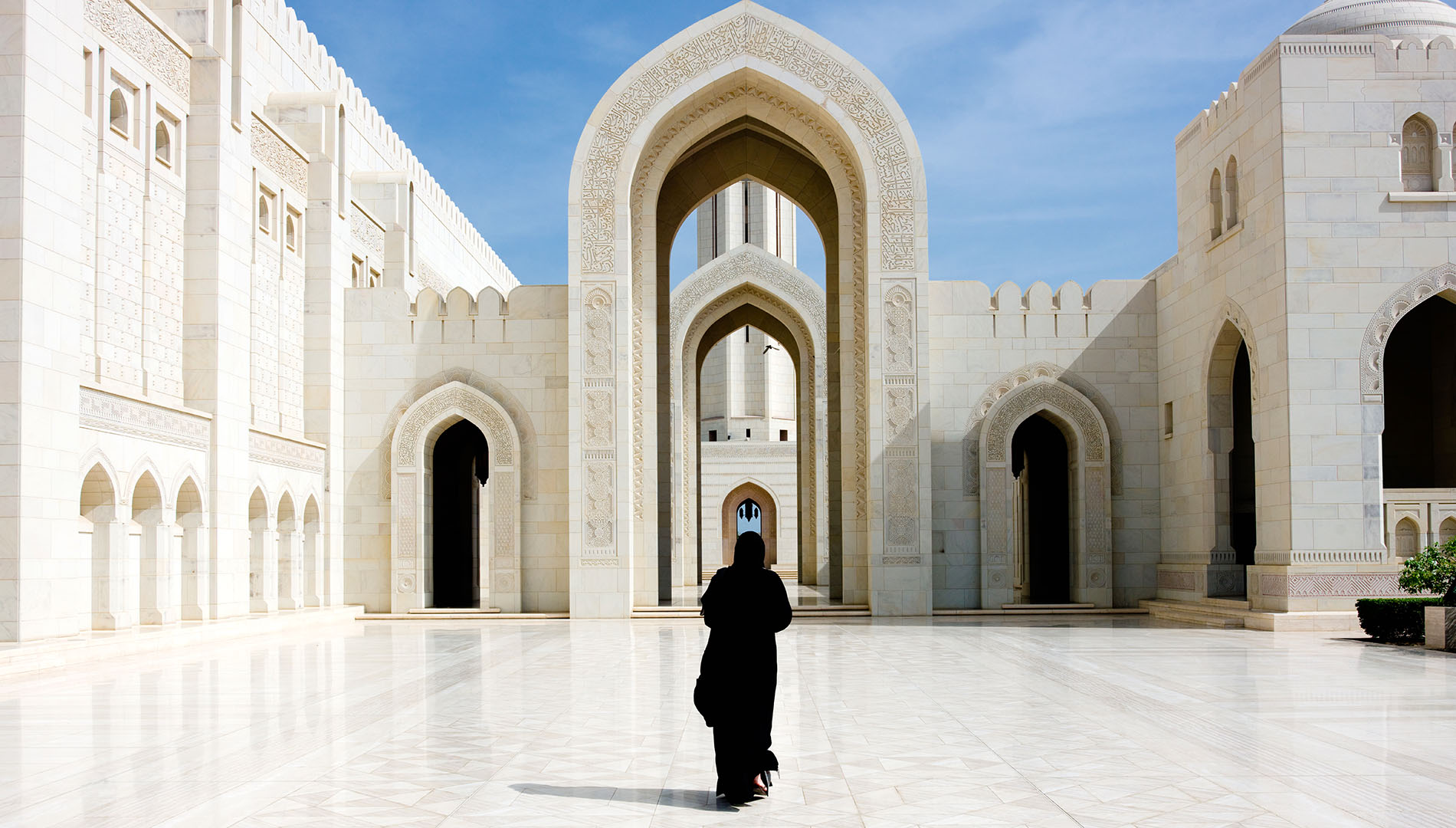
Visit the gleaming white Sultan Qaboos Grand Mosque and explore the grand prayer halls. Walk along impressive floors of marble as the sun casts shadows between the towering minarets.
Make time to attend an opera performance at the ornate Royal Opera House, which sits just a short distance from W Muscat.
Drive to Nizwa Fort, a huge 17th-century sandstone fortification built by former ruler Imam Sultan Bin Saif Al Ya’rubi to protect the city. A 100-foot-high round tower, complete with canons, dominates the skyline. Explore the hidden passageways and staircases throughout the fort.
Spend some time exploring the ruins of Harat al-Bilad, a historic town in the middle of Manah oasis. Mud-brick buildings, tall watchtowers, and four gateways line the stony paths around the town.
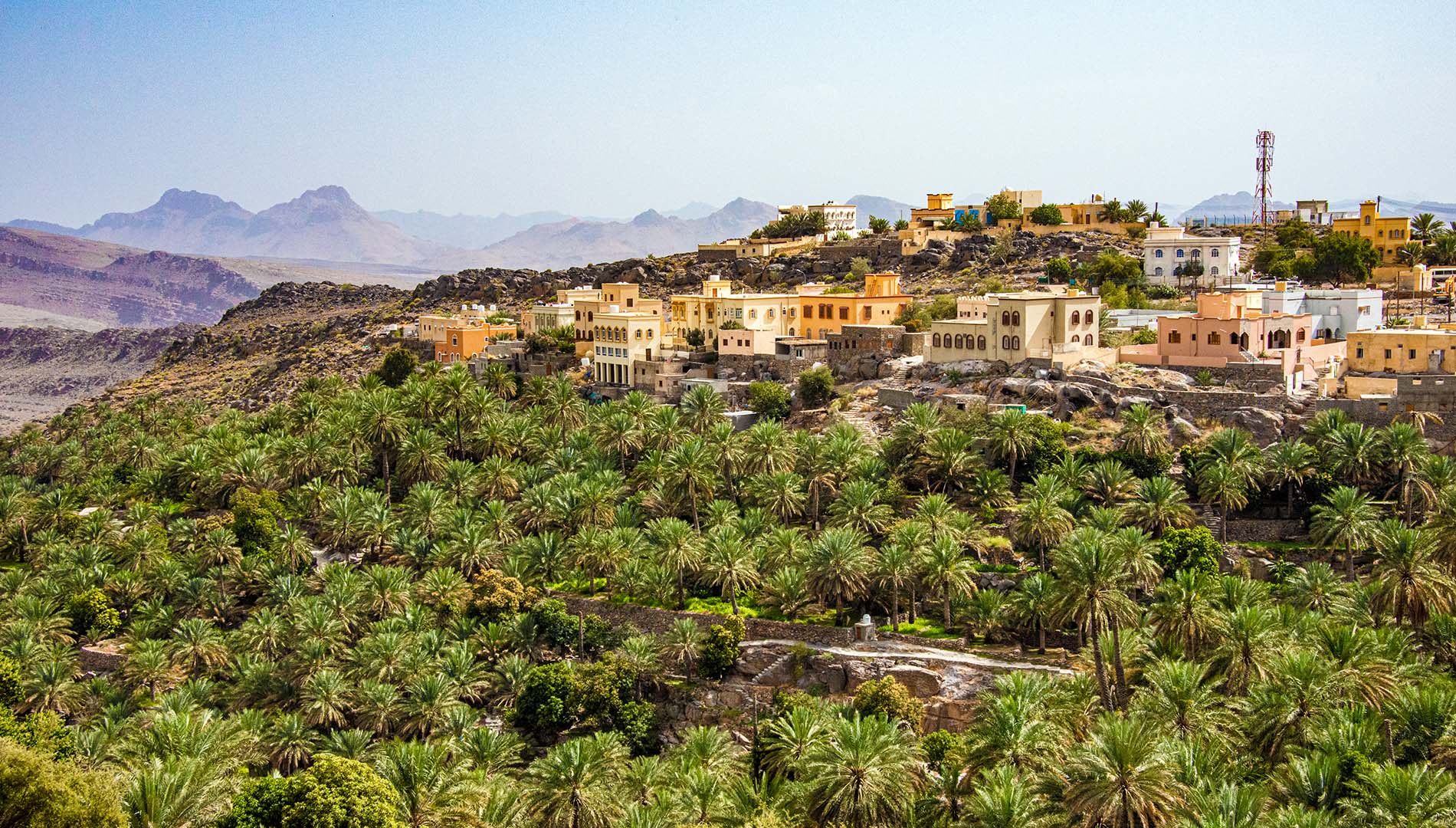
End the day watching the sun setting behind the mountains at Misfat al Abriyeen, a 300-year-old mud-house village near Jebel Shams. Walk through the date palm plantations and settle into a clifftop spot as the sun falls.
Saturday: Natural Wonders
Many places are closed on Saturday in Oman. So, what better excuse to spend the day exploring Oman’s untouched nature? Set off early to escape the heat and swim in the clear, blue waters of Wadi Shab or the huge Bimmah Sinkhole.
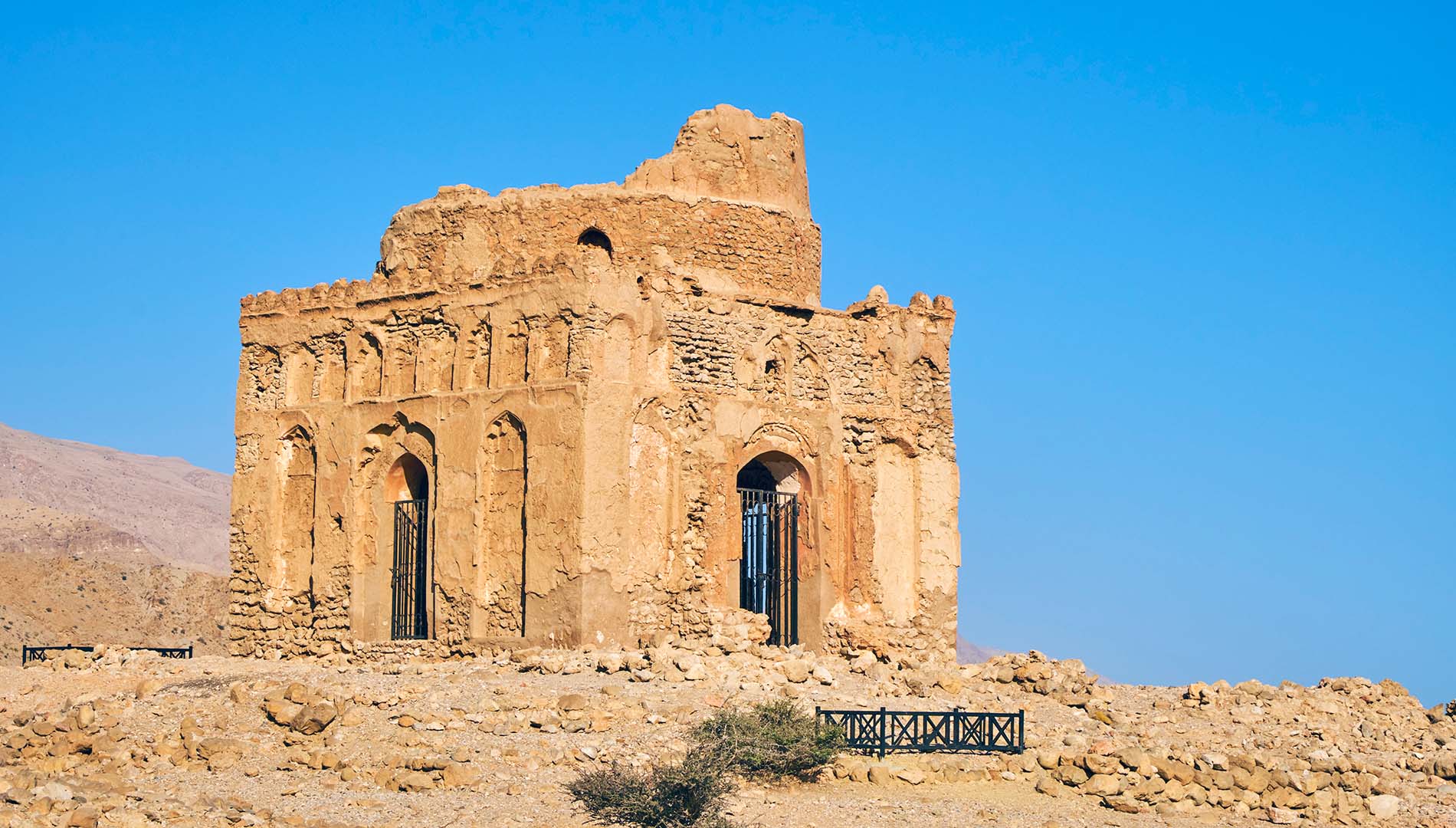
Follow the highway toward Sur to the ancient city of Qalhat, a UNESCO World Heritage Site. The city was a port between the 11th and 15th centuries, and the ruined buildings set amid the sand and rubble bear symbols and designs from Asia, Africa, and Europe.
Get back onto the road to Sur and head to a traditional dhow factory to watch the skilled boat builders carving wood using techniques that have changed little over centuries. Stop, admire, and imagine where these boats might have sailed hundreds of years ago before you head back to Muscat as the sun sets over the desert.
